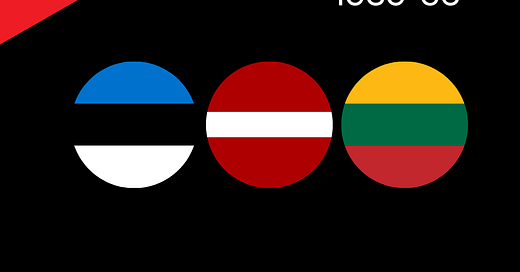“I remember the animal carriage we were stationed in. My brother became sicker and sicker. He and my mother were isolated at the rear door of the carriage not to affect the others. A grey striped blanket was hung up to separate the area. My aunt Salme took care of me. She was from our neighboring village. She had been warned in advance about the deportation and had run to the forest. Those carrying out the deportations took her three children and mother-in-law. Aunt Salme freely came to Siberia, hoping to be united with her family. Still, her children had been taken to an orphanage and her grandmother to a nursing home — it took her a long time to be reunited with her family. I hated the blanket separating me from my mother and my brother. I remember the grown-ups discussing that my brother would not last long. There were stops where hot water was provided, and the dead offloaded. Luckily my brother stayed, but he arrived very sick. We were dropped off at Užur station. A slave market was set up, that is, the local representatives had arrived, and they decided who they needed as additional labor.”
Asta Tikerpäe's memories of family deportation in 1949. Recorded in the 2000s for the virtual exhibition "Road to the unknown" by the Tallinn University.

Every June 14th, Estonia, Latvia, and Lithuania honor the memory of the victims and survivors of the mass deportation of the Baltic nations by Moscow. It remains one of the most brutal settler colonialism crimes in modern history.
Numbers really cannot describe the devastation that this crime wrecked on these small Nordic nations. Between 1940 and 1952, Moscow deported an estimated 170,000 Latvians (9% of the population), 40,000 Estonians (17% of the population) and 320,000 Lithuanians (13% of the population). Mass murder and the ruin of World War II will rob the countries of hundreds of thousands more. Moscow would then replace locals with Russian settler colonists and by the end of Russian occupation in the 1990s, all three nations would be on the edge of annihilation.
Their crime? Resisting the Russian colonial empire and wanting to live free, independent and in dignity.
Before being genocided, all three nations tried to negotiate and pacify an aggresive and insecure neighbor. Insisting it wants to ‘protect itself,’ Moscow peddled disinfo questioning the neutrality of Estonia, Latvia, and Lithuania. Then the empire bullied the nations into accepting military bases on their territories. The Kremlin used them to invade based on false accusations of plotting and conspiring against Russia. Moscow installed puppet regimes, organized sham elections and used the vote to justify the annexation. Few in those countries knew at the time that this all was a cruel charade: Moscow earlier shook hands with Nazi Germany on a secret colonial deal that included recolonization of the three Baltic states.

Estonia, Latvia and Lithuania learned the hard way that negotiations with Russia are always futile and any ‘peace deals’ always result in more slaughter. And the rest of the free world didn’t care to stand up for freedom and assist them.
Check out new episode in my Russian Colonialism, Exposed series that covers the Russian invasion of Estonia, Latvia, and Lithuania and their fierce anti-colonial resistance between 1939 and 1956.
The ‘Russian Colonialism, Exposed’ series is based on my newly-released ‘Russian Colonialism 101’ pocket guidebook. My Patreon and Substack families fund these explainers — by joining, you get access to exclusive reading lists curated for each episode. You can access them below behind the paywall.



